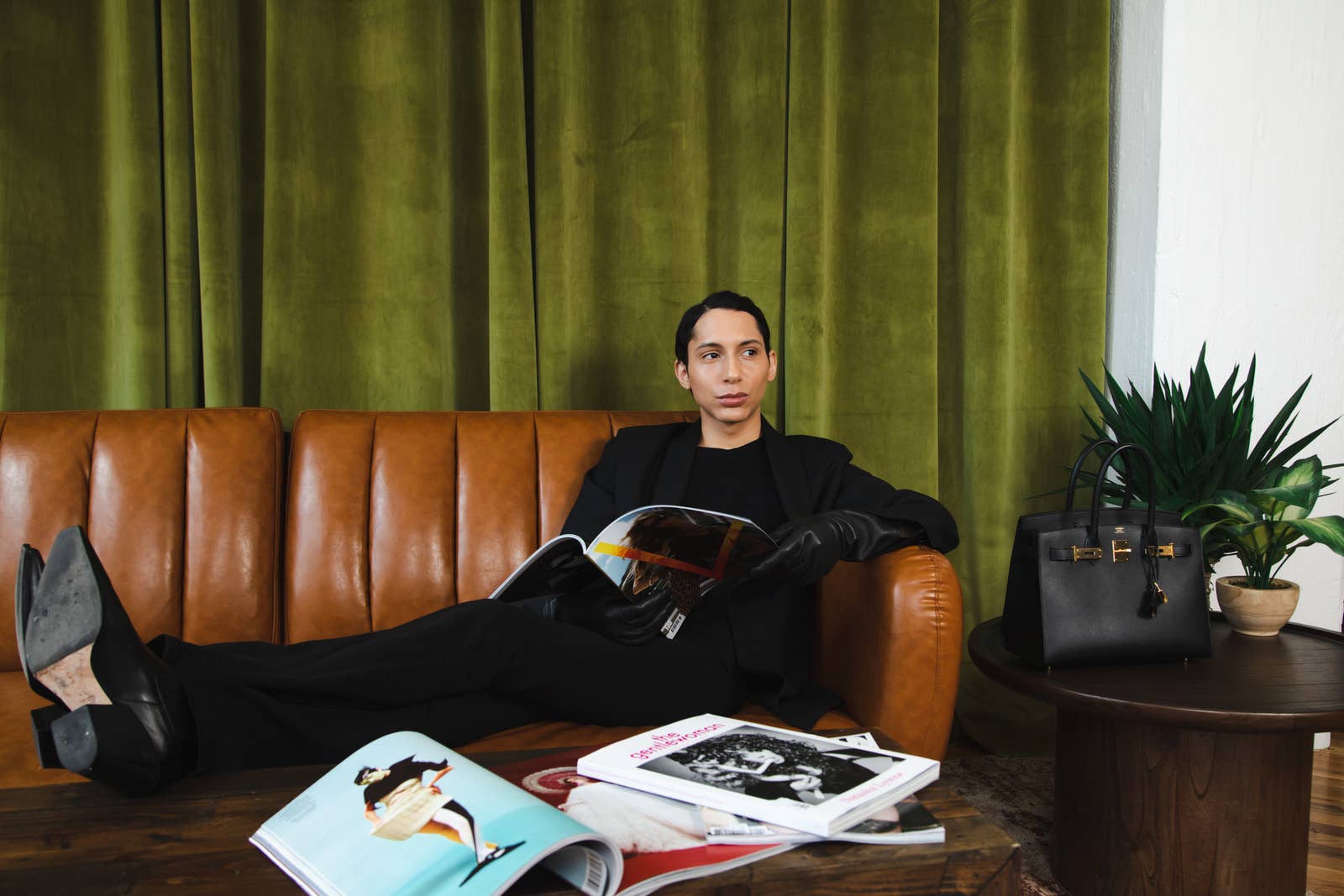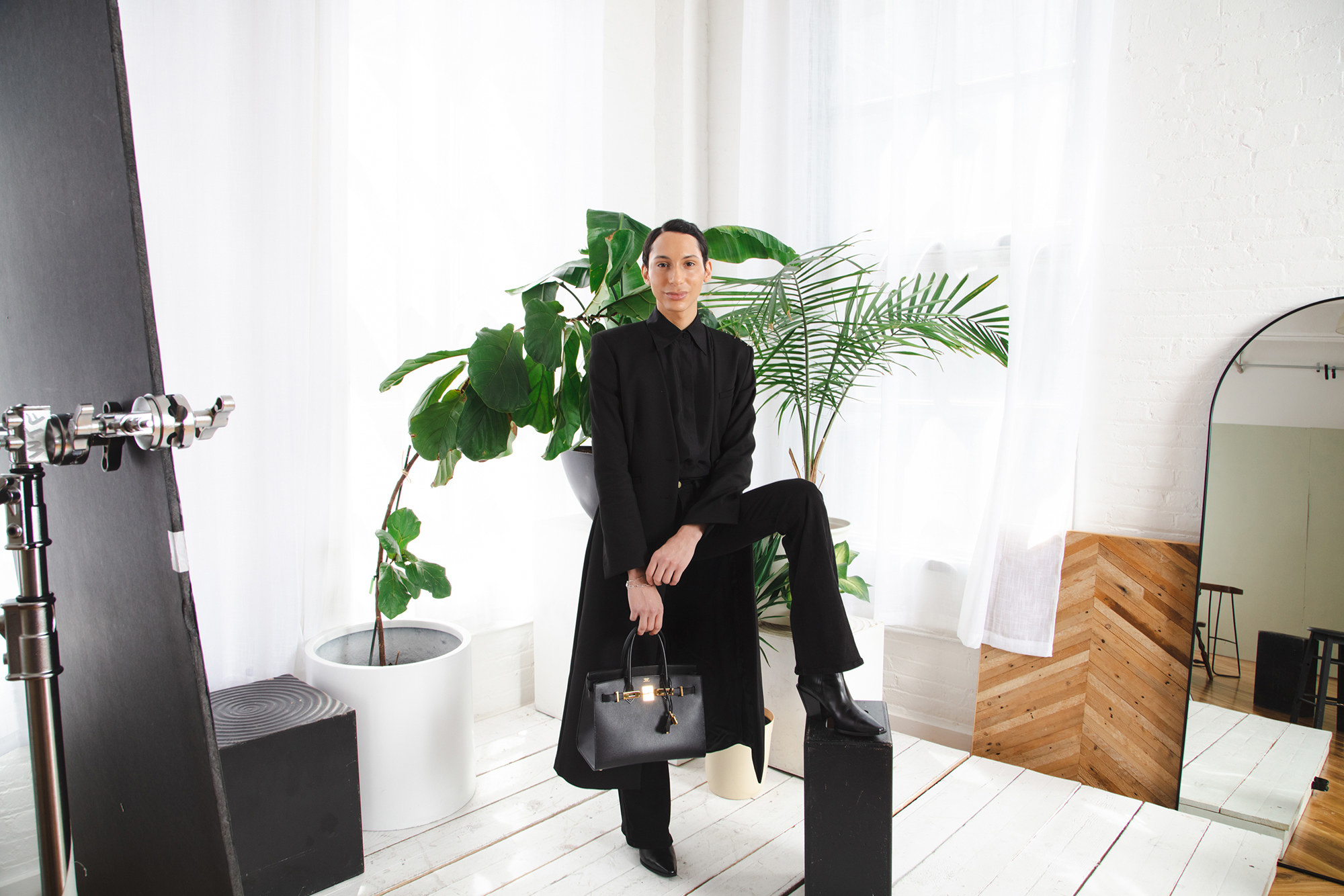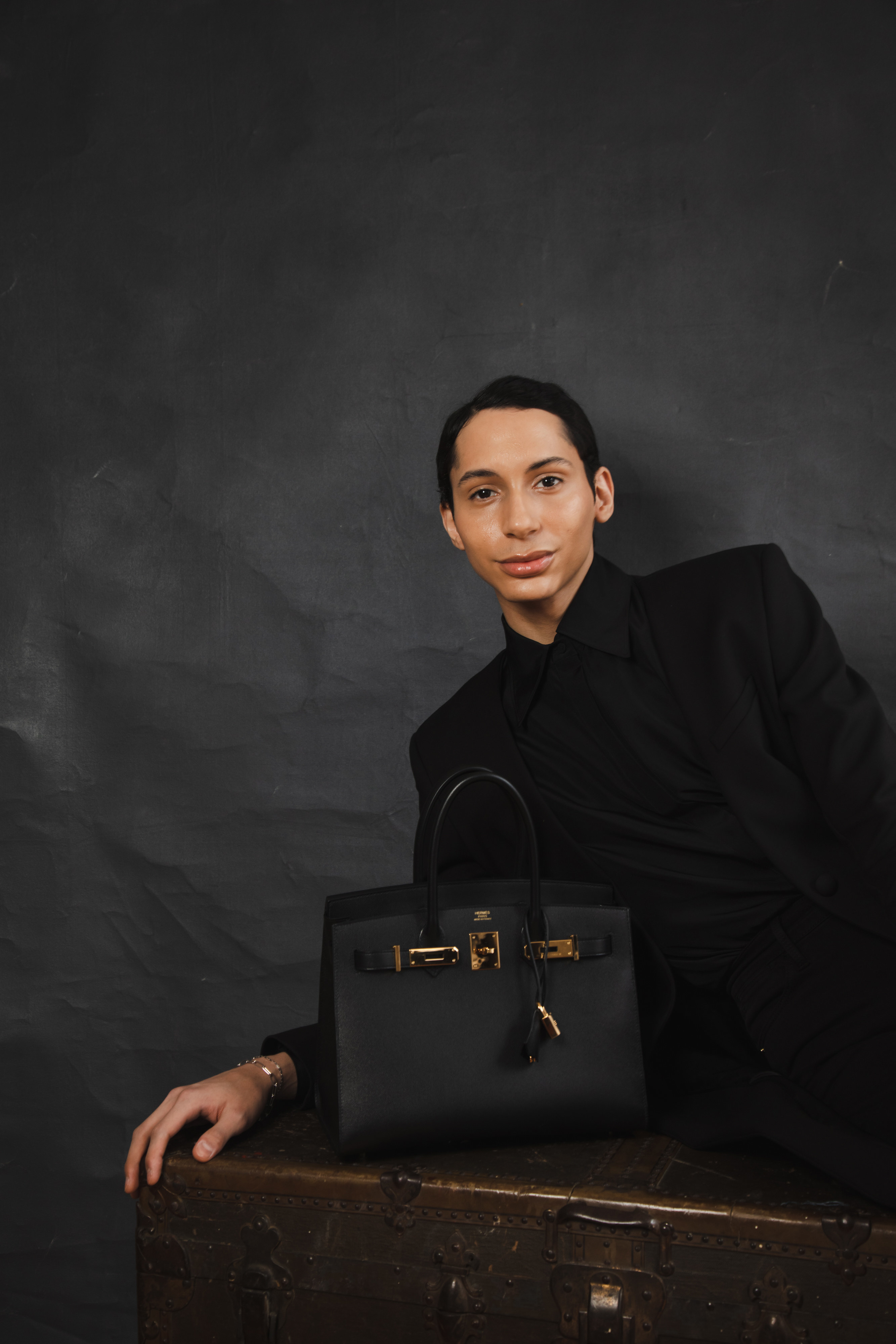
This is an excerpt from Please Like Me, BuzzFeed News’ newsletter about how influencers are battling for your attention. You can sign up here.
Charles Gross may have built his entire social media persona around luxury fashion, but he wanted to lunch at a chain restaurant you’d find in an airport.
From the videos he posts to his 1 million TikTok followers, I’d expected he’d choose the kind of hydrangea-filled French café that makes you pay for water and air, rather than Le Pain Quotidien (the harder-to-pronounce version of Panera Bread).
“Le Pain has never let me down,” he told me, in his distinctive soothing voice. “If we had met in 2017, I probably would have asked to do this interview in a nightclub, and you definitely would have thought I was on heavy drugs.”
That may come as a surprise to those who only know Gross from scrolling their “For You” pages. His quiet, calming demeanor and catchphrase “let’s talk about it” have become a part of his iconography on TikTok, being referenced by the older guard of influencers like Tana Mongeau and Jeffree Star. But he’s had a major social media rebrand from the chaotic-but-chic YouTuber to calm TikToker who wants to talk about fashion.
Gross, 26, has amassed 34 million likes on his channel in just over a year, where he shares insider tips and tricks such as how to spot a fake Birkin, introducing concepts like “quiet luxury” (aka no obvious branding), and analyzing fashion industry news with his hushed inflection.
“Ive never been interested in luxury stuff but you’ve made me see them as art! Ill never afford them lol But I enjoy through you!” one person commented. “I love that i can correctly pronounce these brands thanks to you 😂,” another said.
Adopted from Colombia, Gross grew up in the wealthy community of Manhattan private school kids, right next to this Upper West Side Le Pain Quotidien. He started posting YouTube videos a year after his 2013 high school graduation. “It was really random,” he said. “Social media was in such a different place, there was no content creator architecture.” Gross was reselling Birkins on eBay at the time after stumbling across one online for $300 and would make videos about the products, which attracted more viewers to his channel.
From 2014 to 2019, seven days per week, Gross posted the entirety of his life online: his two-day marriage, dyeing his hair at midnight hours, various sexual encounter stories. He was regularly embroiled in niche drama and constantly posted troll videos. On YouTube, he was messy, erratic, and controversial. And he didn’t care at all — though he does now.
“It’s honestly physically repulsing to see myself then,” Gross told me. “I’m still mortified about how I was projecting and the energy I put out.”
Living so visibly online is a double-edged sword for many young people who are still figuring out who they are. “Making a video every day from being 19 to 25, it wasn’t a good idea,” he said. “I had conflict in my life, and I constantly blamed the people around me for how I felt. And I reveled in it. I’m toxic and messy and full of drama. And it was all filmed.”
Gross didn’t want to consider the ramifications, especially when the mess was helping to grow his following. So instead, people who would criticize his videos were haters, snakes in his life. When someone would leave a comment, telling him to seek help for his mental illness, he would sink into his beliefs that contention was simply in his personality.
But suddenly in 2019, Gross deleted his entire archive of YouTube videos. He told me that he had a realization: He didn’t want to live like this anymore. He was diagnosed with manic episodes and bipolar disorder. “I had no intention of returning to social media,” he said. “I told myself I would not continue any path in life until I achieved a singularly positive mindset. Not a negative thought about anything or anyone.”
After deleting his half-decade of vlogs, he went dark for two years, grinding his constant output stream to a standstill. When he resurfaced again in 2021, his old subscriber base encountered a completely new Gross — one who stayed home more frequently, spoke with an overwhelmingly positive perspective, and even had a deeper and slower voice than the person they’d watched before.
"On YouTube, he was messy, erratic, and controversial. And he didn’t care at all — though he does now."
Gross has publicly addressed this changed mindset for those who have followed his life online for years, but his return also meant entering a different social media landscape.
“When I started YouTube, it wasn’t very easy to break into,” he said. “But now it’s easier to access. And I think more people want to make content that inspires. A high schooler with unbridled creativity can architect some of the biggest trends of the year in fashion or music industries by going viral.”
Similarly, Gross’s content has shifted along with that direction of the internet.

“Luxury is still relevant,” he said. “But it is frantic. Their power is decreasing by the day as the consumer becomes more critical. And they’re realizing that a glossy spread in a magazine does not work as well to increase sales as an individual on TikTok or Instagram.”
Social media has been the hilariously telling catalyst behind corporations’ race to stay relevant in the consumer’s eye, from corny attempts at brand humor to major brand revivals via influencer marketing. Gross believes that communities like luxury collectors, that have long prided themselves on exclusivity, are struggling to seem relatable now that being mean isn’t working.
Still, that’s why Gross is focused on deconstructing the intimidation of walking into a classist environment such as a designer store. “Fashion is art, and art is for everyone,” he said. “I mean, I’ll never be able to afford a Matisse, but if I want to learn about one, I can go to a museum and see a painting. If someone is interested in learning about a Birkin bag, even if they have no interest in buying one, why are there these preliminary things to even be allowed to be aware about it?”
Of course, Gross’s channel is not the savior that will single-handedly destroy the infrastructure of luxury. He grew up wealthy, and even though his focus has been to open fashion knowledge to everyone, there is still an aspirational quality to want to live and look and smell like him. He has always looked and felt expensive. You can’t have an influencer without something to follow.

He showed me the black Birkin he brought to Le Pain Quotidien, straightening out the hardware so I can get a proper look at it. Gross’s collection of four Birkin bags is valued at $100,000, he said — his total collection, which includes more bags from Hermès (at least $62,100 more), Dior (at least $5,300), and Louis Vuitton ($4,300), costs more. Many of these bags come from his work as an influencer, but some are a throwback from his reselling days. It looked almost alien to see this purse that costs the price of a Honda Civic, nestled on the vaguely sticky seat of this café. I tried very hard not to think about someone’s nearby cinnamon roll falling onto it.
But then Gross explains a bit about why he likes bags, the history of designer houses, and the disruptions of social media to haute couture. Even though I will never be able to afford a Birkin, it’s compelling to listen to his relaxing voice, to think about that expensive bag as a piece of artisanship — even if it is also for consumption, at the end of the day. I am in the Charles Gross Museum, and I’m having a great time. ●
